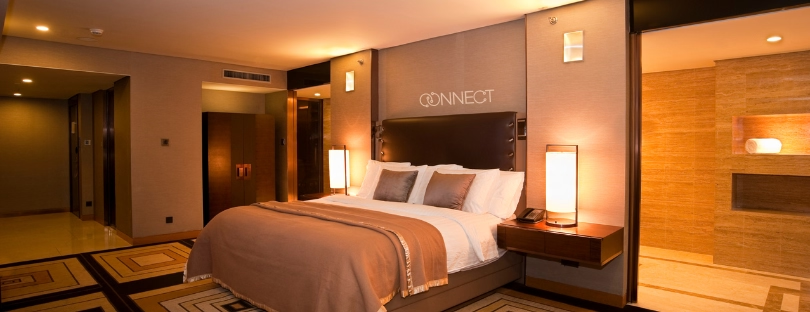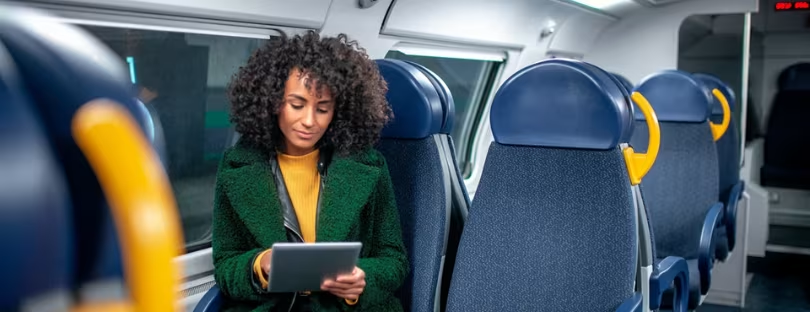
The Role of Smart Connectivity in Guest Experience 2.0
If you’ve been following how travel is evolving, you’ve probably noticed something big happening in hospitality: guests don’t just want comfort anymore—they want connection. Not a metaphorical connection (although that’s nice too). I mean literal, seamless, intelligent, “my-room-knows-what-I-want-before-I-do” connectivity.
Welcome to Guest Experience 2.0, a world where Wi-Fi is just the starting point, and smart connectivity ties the entire stay together: from check-in to checkout, from the lobby to the rooftop bar.
And honestly? It’s about time.
Why Connectivity Became the New Luxury
A decade ago, luxury was about thread count, marble bathrooms, and pillow menus. Today? The first thing most travelers ask is: “What’s the Wi-Fi password?”
But the shift goes deeper. Modern travelers—especially the digital nomad crowd, business travelers, and Gen Z explorers—expect everything to be instant, personalized, and digital-first. They’ve grown up managing their lives from their phones. Why wouldn’t they expect the same from a hotel?
Smart connectivity is the invisible layer that makes modern hospitality work. It’s the difference between a hotel that feels outdated and one that feels intuitive.
And the truth no one admits?
Even the most stunning hotel design can’t compensate for a laggy connection or a check-in process that feels like 1998.
From “Digital Amenities” to “Digital Expectations”
Hotels used to offer digital perks as a bonus. Mobile keys, smart TVs, app-based controls—they were differentiators.
Not anymore.
Now they are table stakes.
Smart connectivity has become the backbone for:
- Frictionless check-ins (no queue, no paperwork, no frustration)
- Ultra-personalized in-room experiences (hello, preferred room temperature)
- Effortless work setups (because Zoom calls wait for no one)
- Instant service delivery (chatbots, staff apps, and automation)
- Travelers who don’t want to call reception (which is… 90% of them)
Guests don’t want “tech for the sake of tech.” They want tech that removes annoyances and adds joy. And that’s exactly what smart connectivity enables.
Guest Experience 2.0 Starts Before Guests Step Inside
Here’s the thing: the guest experience doesn’t actually start at the hotel—it starts at the airport, on the airplane, or even the moment someone begins planning their trip.
Connectivity shapes those early moments too:
- Travelers need stable roaming or eSIM data to browse directions.
- They expect digital confirmations, maps, and options sent to their phone.
- They want a room assignment before arriving.
- They want to skip the front desk completely.
Hotels that understand this are integrating connectivity into the entire journey, not just the stay. Think:
Smart pre-arrival emails → mobile keys → live chat → in-destination recommendations → seamless checkout.
It’s all connected. Literally.
Inside the Room: Connectivity That Just Works
Let’s be real: nobody wants to spend 20 minutes figuring out how to connect their phone to an in-room TV. And yet it happens. A lot.
Guest Experience 2.0 fixes that.
Here’s what truly connected rooms look like (and what guests now expect):
1. Hyper-fast, reliable Wi-Fi
Not “good Wi-Fi.”
Not “Wi-Fi that works most of the time.”
Guests want home-level, office-level, nomad-level speed. Period.
2. Casting that actually works
Netflix, Amazon Prime, YouTube, Spotify—everyone wants their own content, not the hotel’s ancient TV lineup.
3. Smart room controls
Lights, temperature, blinds, room service—managed from a phone or a tablet. No mysterious switches. No “which button actually turns the light off?”
4. Personalized comfort settings
Imagine a room that remembers:
- Your preferred AC level
- Your lighting style
- Your typical check-in time
- Your favorite pillow type
Hotels are already experimenting with these. The key is smart connectivity linking it all together.
5. Voice assistants—if done right
Not the creepy kind.
Not the “I didn’t catch that” kind.
But assistants that connect to the guest profile, not their private accounts.
(Important distinction.)
How Connectivity Helps Hotels Behind the Scenes
Guests don’t realize how much smart connectivity supports hotel teams, but trust me—this is where the magic happens.
Smart connectivity enables:
Real-time housekeeping updates
- Rooms get marked clean instantly.
- No walkie-talkie chaos.
Predictive maintenance
- AC working overtime?
- Light about to fail?
- The system flags it before a guest even notices.
Data-driven decision-making
- When do guests use spa services?
- Which hours need more staff?
- What amenities aren’t being used?
Hotels can stop guessing and start optimizing.
-
Faster service delivery
Guests can request extra towels, room service, or late checkout through an app or chatbot. Staff receive digital alerts instead of phone calls.
Everything becomes smoother, faster, and more coordinated.
A connected hotel is an efficient hotel.
Connectivity = Personalization (The Good Kind)
Personalization is the buzzword every brand throws around, but smart connectivity makes it real rather than gimmicky.
With the right systems connected:
- A returning guest can walk into a room set to their favorite temperature.
- A digital nomad can automatically receive a desk-optimized room.
- Families get content suggestions tailored to kids.
- Business travelers get meeting room availability sent straight to their phone.
And it works without feeling invasive, because the hotel is simply remembering preferences, not personal secrets.
Smart connectivity is the bridge between guest comfort and hotel intelligence.
The Rise of “Connected Hospitality Ecosystems”
This is where things get exciting.
Hotels aren’t standalone properties anymore—they’re part of interconnected travel ecosystems:
Imagine landing in a new city and receiving:
- Your hotel room number
- Mobile key
- Public transport card activation
- A local eSIM plan
- Directions to the hotel
- Personalized dining recommendations
All in one push, triggered by smart connectivity.
This is where Guest Experience 2.0 is heading: a connected journey, not just a connected stay.
But Let’s Be Honest—Guests Still Want Human Connection Too
All the smart systems in the world won’t replace warm hospitality.
Smart connectivity isn’t about removing people from the experience. It’s about removing friction so staff can spend time on what actually matters:
- meaningful conversations
- genuine assistance
- memorable moments
Tech creates space for humanity.
When you don’t have to explain how to use the thermostat, staff have more time to offer local insights, handle special requests, or simply greet guests with a smile.
That balance—efficiency meets empathy—is the heart of Guest Experience 2.0.
So, What’s Next?
Connectivity will continue leveling up hospitality in ways we’re only beginning to see:
- Scannable passports for instant check-in
- Room preferences stored globally across hotel groups
- AI-driven guest communication
- Predictive travel services based on context
- 5G/6G-powered immersive AR guides in-destination
- Satellite-enabled coverage ensuring no network gaps
Smart connectivity isn’t a “trend.” It’s the infrastructure that will define hospitality for the next decade.
And hotels that embrace it now will become the ones travelers swear by.












